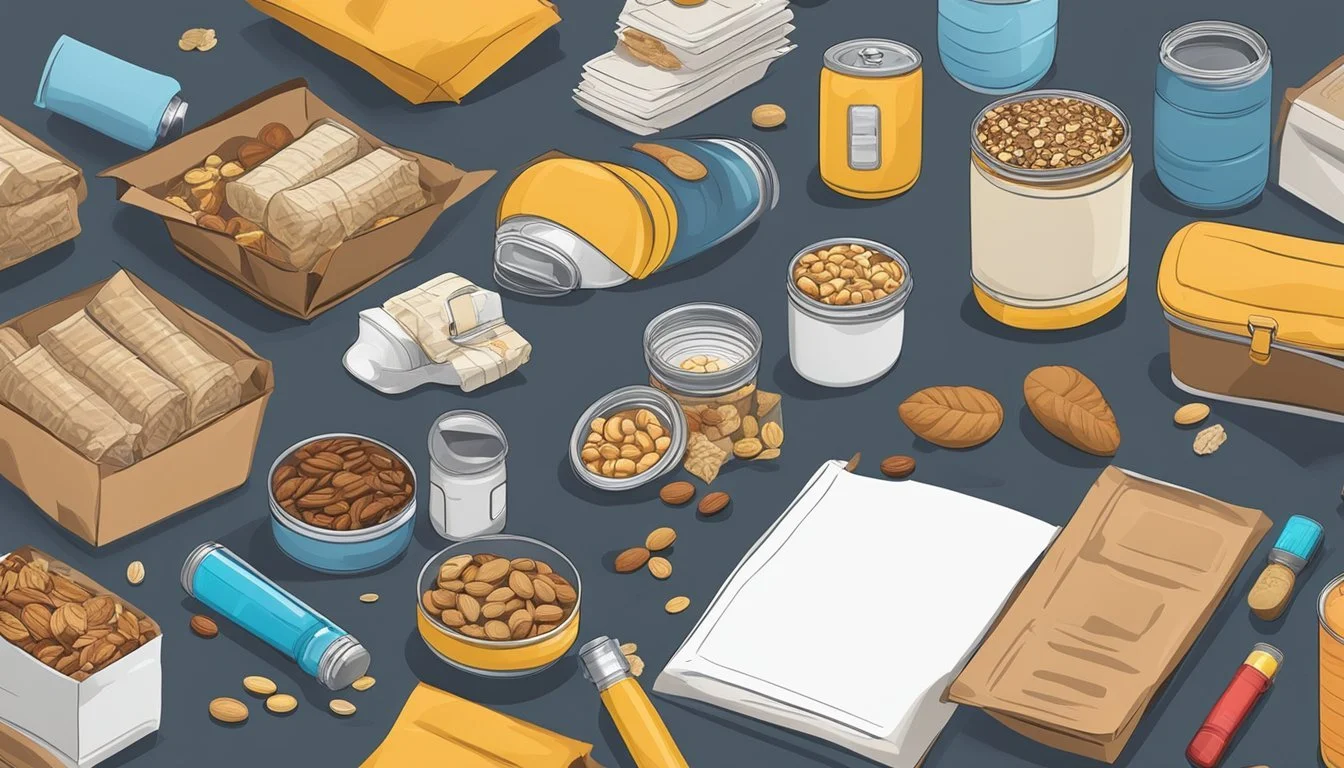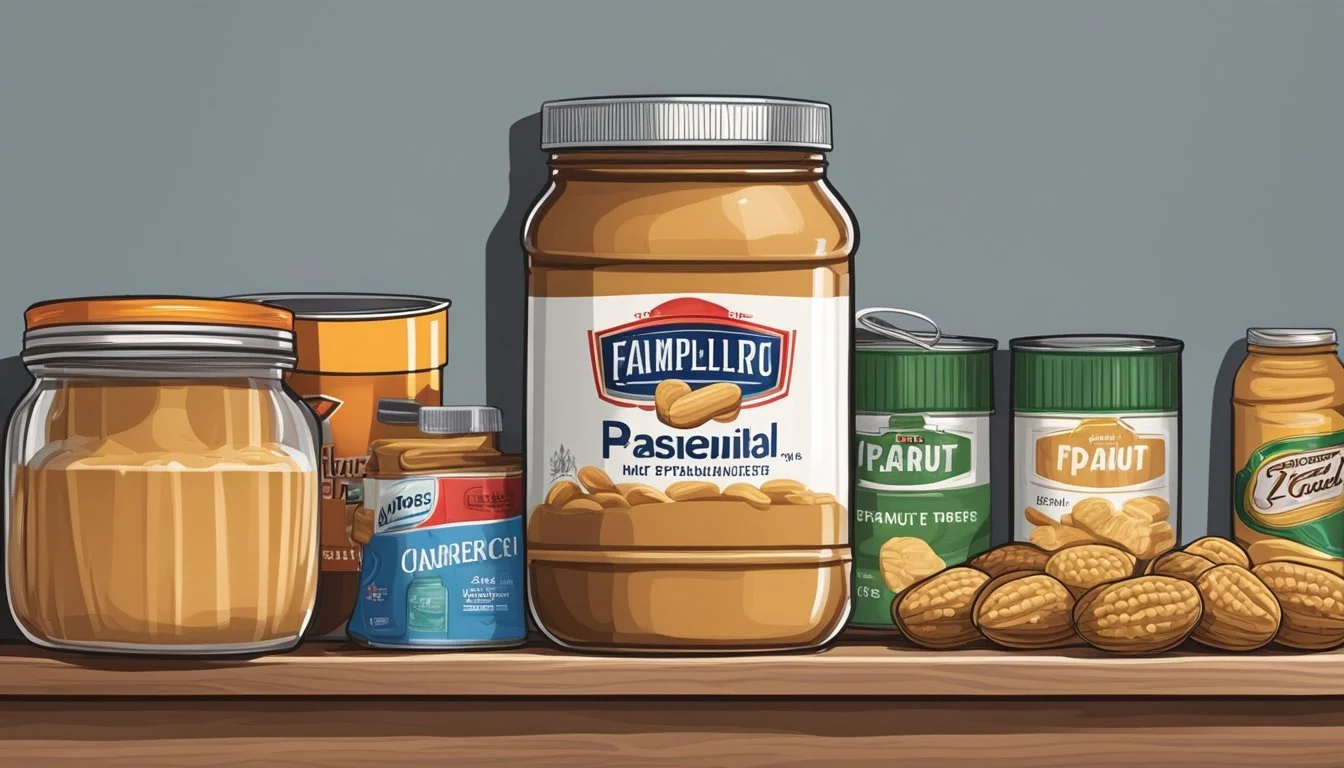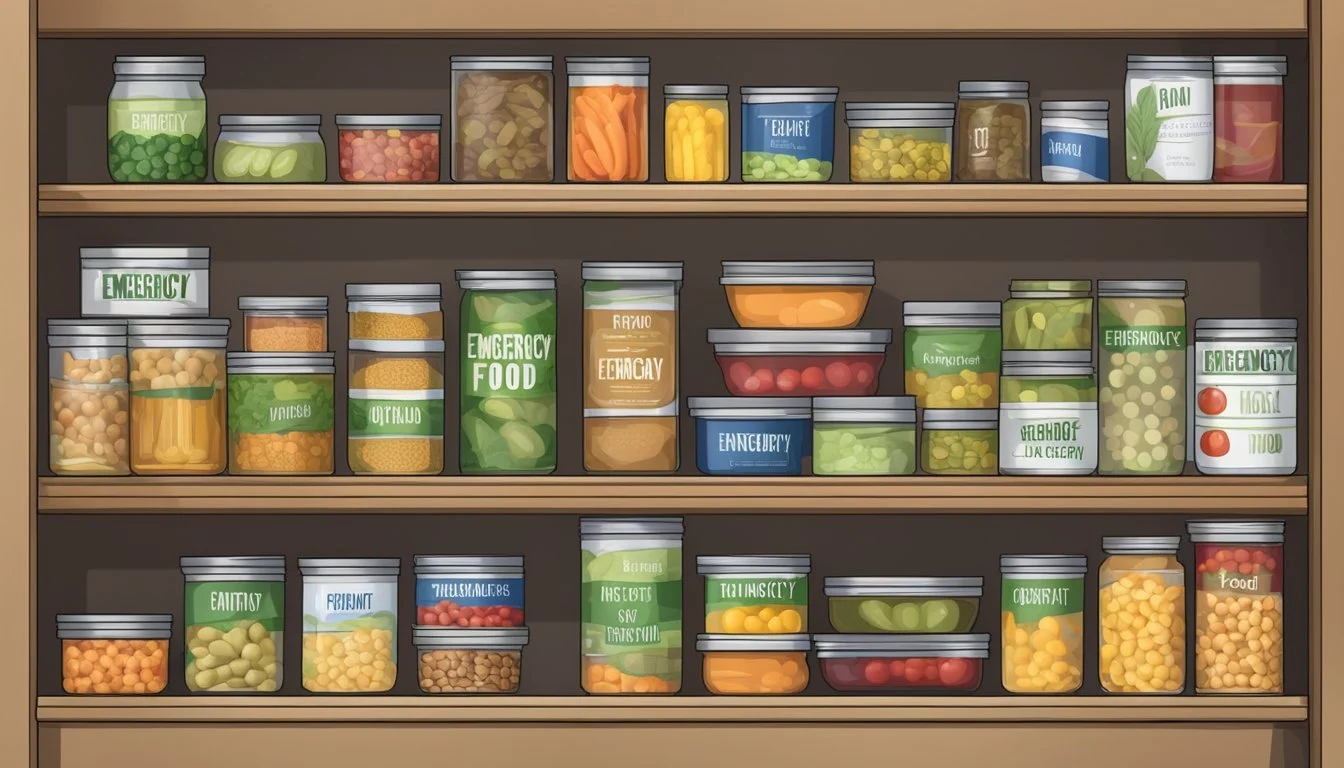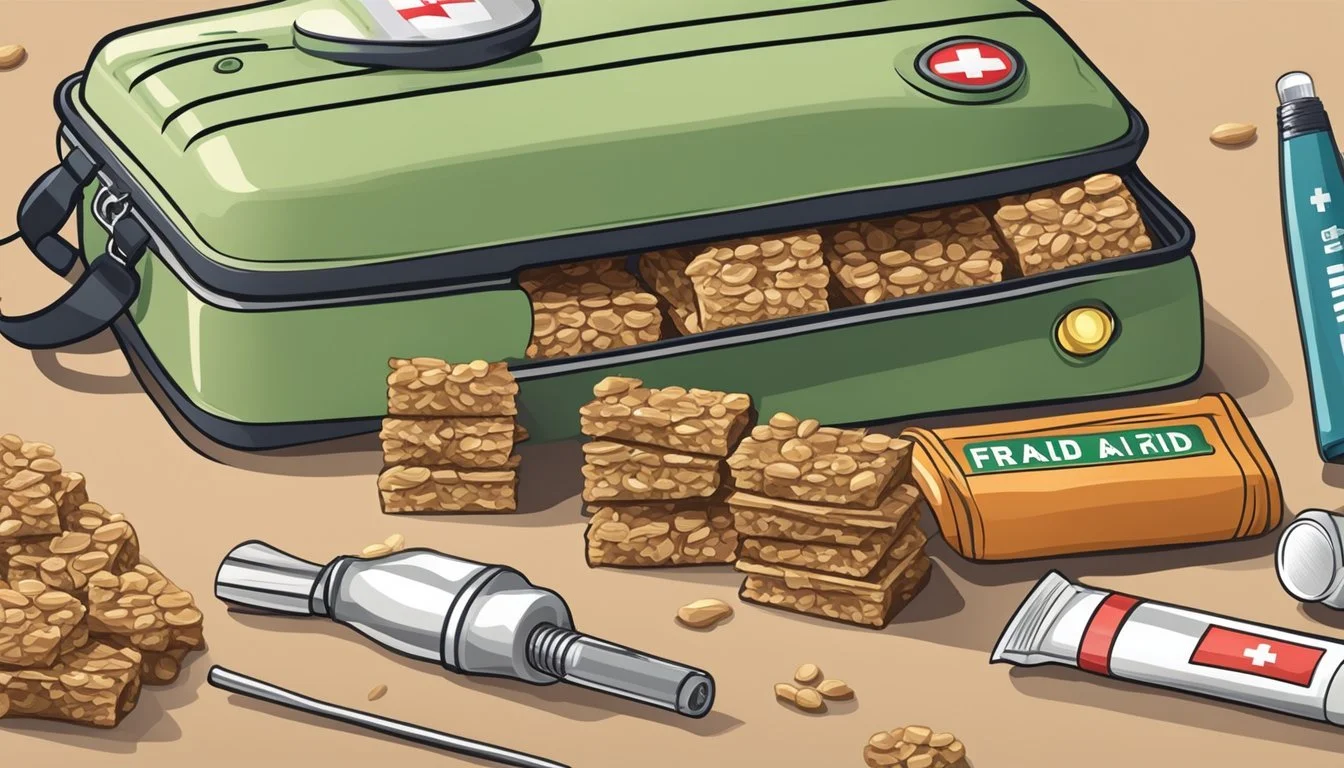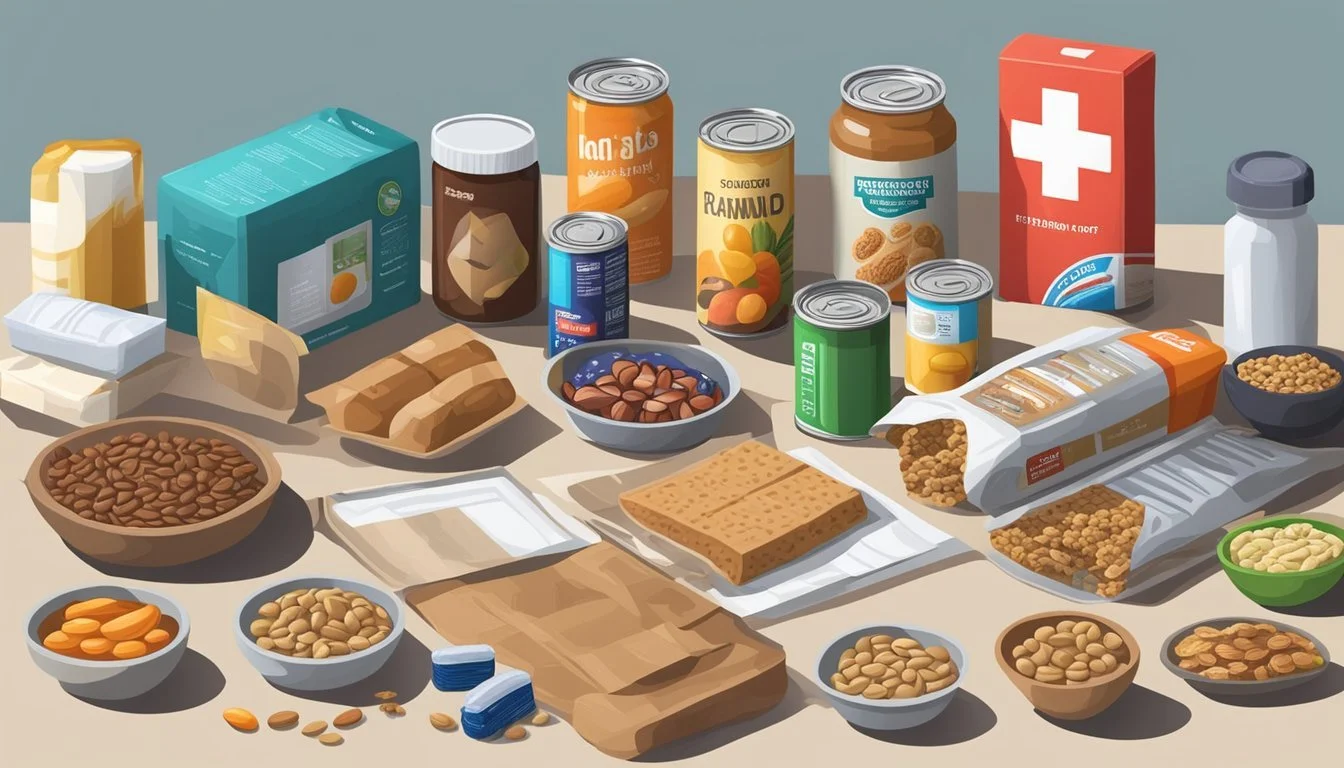Essential Emergency Food Supplies: What to Stock for Unexpected Situations
Emergencies can strike at any time, and having a well-stocked pantry is crucial to ensure that you and your family can sustain yourselves when resources are limited. The right food choices can help maintain health and morale during challenging situations, providing the necessary nutrients and energy to stay strong.
Choosing foods that are shelf-stable, nutritious, and versatile is key to creating an effective emergency food supply. These foods should be easy to store, have a long shelf life, and support a balanced diet even when fresh produce and other perishables are unavailable. Planning and preparing ahead can make a significant difference in how well one can cope during emergencies, ensuring peace of mind and readiness.
1) Canned Tuna
Canned tuna is a versatile and nutritious option for emergency food supplies. It is rich in protein, which is essential for maintaining energy levels and muscle repair.
The long shelf life of canned tuna makes it ideal for stockpiling. It can last for several years when stored in a cool, dry place.
Tuna provides important nutrients such as Omega-3 fatty acids, which support heart health. Additionally, it is a good source of vitamin D and selenium.
Its convenience cannot be overstated. Canned tuna requires no cooking and can be eaten straight from the can or added to various dishes such as salads, sandwiches, or casseroles.
The affordability of canned tuna also makes it accessible for most budgets. It's an economical way to add quality protein to an emergency food supply.
When choosing canned tuna, look for options packed in water rather than oil to cut down on unnecessary calories and fat. Some brands also offer low-sodium versions for those monitoring their salt intake.
In emergency situations, the flexibility and nutritional value of canned tuna make it a practical choice. Whether you are facing a power outage or a longer-term crisis, having a stock of canned tuna ensures a reliable source of nourishment.
2) Peanut Butter
Peanut butter is an excellent choice for an emergency food stockpile. It is shelf-stable and, when stored correctly, can last for up to two years. Keeping it in cool, dry places, away from direct sunlight, helps maintain its quality.
This food is nutrient-rich, offering a good source of protein, healthy fats, and calories. A single serving can provide essential nutrition, which is crucial during emergencies when energy needs are higher.
Peanut butter is also readily available and affordable, making it a practical option for many. It's versatile, as it can be eaten directly from the jar or used in various recipes, sandwiches, and snacks. This adaptability adds to its value in emergency situations.
It is also compact and easy to store. A small jar can pack a significant amount of calories and nutrition, making it a space-efficient option for emergency supplies.
3) Dried Beans
Dried beans are a staple for emergency food storage. They have a long shelf life, typically lasting up to 25 years when stored properly. Mylar bags with oxygen absorbers are recommended for optimal preservation.
White beans, such as navy beans and butter beans, require less cooking time, making them ideal in emergencies where fuel conservation is critical.
Kidney beans are another versatile option. They can be used in various recipes, from simple rice and beans to hearty chili. Beans like chickpeas and black beans are high in protein, fiber, potassium, and iron, making them valuable for nutrition during crises.
Proper storage in cool, dark places is essential to maintain the quality and nutritional value of dried beans.
4) Instant Noodles
Instant noodles are a popular choice for emergency food supplies. They have a long shelf life, often lasting years without spoiling. This makes them a reliable option for long-term storage.
One major advantage is their convenience. Instant noodles can be eaten straight out of the package if necessary, without requiring any preparation. This is useful when cooking facilities are unavailable.
They are also lightweight and portable, making them easy to transport in emergency kits. Their packaging is compact, helping to save space in storage.
Instant noodles provide quick energy from carbohydrates, essential in situations where physical exertion may be required. They also contain sodium, which can help maintain electrolyte balance during stressful conditions.
While not a complete food, they can be paired with other stored items to create more balanced meals. For example, adding canned vegetables or protein sources can enhance nutritional value.
Their affordability is another key benefit. Instant noodles are inexpensive, allowing for bulk purchases without a significant financial burden.
In summary, instant noodles are a practical addition to any emergency food stockpile, offering longevity, ease of use, and cost-effectiveness.
5) Canned Vegetables
Canned vegetables play a crucial role in emergency food supplies. They are readily available in most supermarkets and have a long shelf life, making them convenient for long-term storage.
For a balanced diet, canned vegetables provide essential nutrients such as vitamins and minerals. They help in maintaining a healthy immune system during emergency situations.
Common canned vegetables include corn, peas, and green beans. These varieties offer a good mix of flavors and textures, adding variety to meals even in constrained situations.
Another advantage is that canned vegetables can be easily incorporated into various recipes. They can be used in soups, stews, and even eaten directly from the can.
When selecting canned vegetables, it's advisable to choose options with low sodium content. High sodium levels can be detrimental to health, making it important to read labels carefully. Odium is commonly used as a preservative but has health drawbacks.
Additionally, some canned vegetables come with added preservatives and flavorings. Opting for those that are closer to their natural state is generally better for health.
In emergency scenarios, having a range of canned vegetables ensures that nutritional needs are met. This can be particularly important when fresh produce is unavailable.
6) Beef Jerky
Beef jerky is an excellent choice for an emergency food supply. Its main advantage lies in its long shelf life. Properly packaged jerky can last for months, if not longer, without refrigeration. This makes it an ideal option for stockpiling.
Its portability is another notable feature. Beef jerky is lightweight and doesn't take up much space. It's easy to carry in an emergency kit or backpack, making it convenient for on-the-go situations.
High in protein, beef jerky provides essential nutrients needed to maintain energy levels. During emergencies, having a reliable source of protein can help sustain physical strength and stamina. A single piece can contain up to 7 grams of protein.
In addition to protein, beef jerky is a good source of vitamin B12. This vitamin is crucial for maintaining healthy nerve cells and producing DNA. Including beef jerky in an emergency kit ensures access to this vital nutrient.
No cooking is required to consume beef jerky. This ready-to-eat aspect can be especially beneficial during emergencies when cooking facilities may not be available. It can be eaten straight from the package, making it a hassle-free food choice.
Its taste is also a plus. Many people find beef jerky delicious, which can be a comforting factor during stressful situations. Having enjoyable food can help maintain morale.
7) Canned Soup
Canned soup is a versatile and practical option for emergency food supplies.
It requires minimal preparation, often needing only to be heated before eating. Canned soup also offers a variety of flavors and ingredients, catering to different dietary needs and preferences.
Canned soups generally have a long shelf life, making them ideal for long-term storage.
Many canned soups include vegetables, proteins, and grains, providing a balanced meal in a single can. This makes them a convenient choice during emergencies when fresh ingredients may not be available.
While selecting canned soups, it is advisable to choose low-sodium options and those with minimal preservatives to ensure better health benefits.
Additionally, soups with higher nutritional value and those rich in vitamins and minerals are preferable.
Canned soup can also serve as a base for other meals. For example, adding extra canned vegetables or meats can enhance the nutritional content and flavor.
In emergencies, the liquid content of the soup can help with hydration, an essential factor during times when water may be scarce. Thus, canned soup is an essential item in any emergency food supply.
8) Granola Bars
Granola bars stand out as a convenient and reliable choice for emergency food supplies. They're lightweight and compact, making them easy to store and transport.
These bars often feature a blend of oats, nuts, seeds, and dried fruits. This composition provides a balanced mix of carbohydrates, proteins, and fats, essential for maintaining energy levels during emergencies.
Another advantage is their long shelf life, which can range from several months to over a year, depending on the brand. Many granola bars are also available in various flavors, catering to diverse taste preferences.
Granola bars are typically individually wrapped, preserving their freshness and making portion control straightforward. This also helps in rationing food over extended periods if necessary.
For those with dietary restrictions, many options are available that are gluten-free, vegan, or contain no added sugars. This flexibility ensures that most people can find a suitable option.
Overall, granola bars offer a practical, nutritious, and tasty choice for emergency food storage. They are a versatile option that fits well into any emergency preparedness plan.
9) Dried Fruit
Dried fruit is an excellent option for emergency food supplies. It has a long shelf life and provides essential nutrients like vitamins, minerals, and fiber. Common varieties include raisins, apricots, and apples, which can be easily stored and consumed.
These fruits retain much of their nutritional value even after dehydration. They are also lightweight and compact, making them ideal for emergency kits where space and weight are concerns.
In addition to their nutritional benefits, dried fruits require no cooking or refrigeration. This makes them convenient during power outages or when access to cooking facilities is limited. They can be eaten as-is or added to other foods like cereals and trail mixes for added flavor and nutrition.
10) Rice
Rice proves to be an essential food for emergency stockpiles. It is a great source of carbohydrates, which provide necessary energy. Additionally, rice is incredibly versatile and can be paired with various other foods like beans, vegetables, or meats to create balanced meals.
Storing rice is efficient and practical. It has a long shelf life when kept in a cool, dry place. This makes it an excellent option for long-term storage. Whole grain rice is preferable over quick rice due to its higher nutritional value.
Rice also complements other staple foods effectively. Combining it with beans, for instance, offers a good mix of carbohydrates and proteins. This combination can deliver a more complete nutritional profile, making it suitable for sustained consumption during emergencies.
Moreover, rice is easy to prepare. Even minimal cooking skills are sufficient to turn it into a meal. This attribute is particularly useful in crisis situations when simplicity and convenience are paramount. Additionally, rice can accommodate various dietary needs and preferences, from vegetarian to gluten-free diets.
Nutritional Requirements During Emergencies
In emergency situations, certain nutritional needs become critical to maintaining health and preventing malnutrition. Key considerations include ensuring adequate caloric intake, providing the right balance of macronutrients, and maintaining proper hydration.
Caloric Needs
During emergencies, individuals often face increased physical and emotional stress which can elevate caloric requirements. Adults typically need between 2,000 to 2,500 calories per day, but in emergencies, this can increase due to factors like cold weather, physical exertion, and stress.
Pregnant and lactating women, as well as children, have additional caloric needs. Stocking non-perishable, high-calorie foods like energy bars, nuts, and trail mix can help meet these requirements efficiently. Ensuring that calories come from nutrient-dense sources is essential to avoid malnutrition.
Macronutrients
Proteins, fats, and carbohydrates all play crucial roles in maintaining energy and bodily functions during emergencies. Protein is vital for tissue repair and immune function. High-protein foods like canned fish, nuts, and beans should be prioritized.
Fats provide a dense source of energy and are necessary for absorbing vitamins. Include sources like nut butters, oils, and seeds. Carbohydrates are the primary energy source; opt for complex carbs from whole grains, dried fruits, and legumes to provide sustained energy. It's important to balance these macronutrients to support overall health.
Hydration
Maintaining hydration is just as critical as ensuring proper caloric and macronutrient intake. Water is essential for digestion, temperature regulation, and transporting nutrients. It's recommended to have at least one gallon of water per person per day.
In addition to water, consider electrolyte solutions or oral rehydration salts to prevent dehydration, especially if facing extreme temperatures or illness. Having water purification tools or methods, like filters or purification tablets, can ensure safe drinking water is available throughout the emergency period.
Storage and Shelf Life of Emergency Foods
Storing emergency food correctly can extend its shelf life significantly. Knowing the optimal conditions and the longevity of different food items ensures you're prepared for any situation.
Proper Storage Conditions
Temperature: Keep storage areas cool, ideally below 70°F. High temperatures can shorten shelf life.
Humidity: Store foods in dry environments to prevent mold and bacterial growth. Use airtight containers.
Light: Avoid direct sunlight. UV rays can degrade food quality.
Pests: Use rodent-proof containers and oxygen absorbers to keep insects and other pests away.
Rotation: Practice “first in, first out” by placing new items behind older ones, ensuring that you use older items first.
Longevity of Food Items
Canned Goods: Properly stored cans last 2-5 years. High acid foods (e.g., tomatoes) have shorter shelf lives.
Dried Goods: Grains, rice, and pasta can last decades if kept cool and dry.
Freeze-Dried Foods: Often used in emergency kits, these can last 20-30 years.
Whole-Wheat Crackers: These have a shorter shelf life than plain crackers due to higher fat content; check expiration labels regularly.
Salt and Sugar: Indefinite shelf life if kept dry and free from contaminants.
Proper storage conditions combined with the right food selection will help ensure that your emergency food supply remains safe and nutritious.
Preparing Emergency Meals
When preparing emergency meals, it's crucial to consider both simple cooking techniques and no-cook food options. This helps ensure a variety of meals that can be prepared with minimal resources and effort.
Simple Cooking Techniques
Boiling is a straightforward method that requires just water and a heat source. Items like pasta, rice, and some vegetables can be easily cooked this way.
Grilling using a portable grill or over an open flame is another option. Canned meats, vegetables, and even certain canned fruits can be grilled to add variety and flavor.
Using a single pot is efficient and reduces cleanup. Think of soups, stews, and one-pot dishes. For example, combining beans, rice, and canned vegetables in a single pot can create a nutritious meal.
Having manual tools like a can opener, portable stove, and matches is essential. These tools facilitate cooking canned goods and boiling water.
No-Cook Food Options
In emergency situations, having foods that require no cooking is invaluable.
Canned items such as beans, vegetables, fruits, and meats are ready to eat. They are nutritious and have a long shelf life.
Dry foods like nuts, seeds, and dried fruits provide essential nutrients and are easy to store.
High-energy snacks such as granola bars, protein bars, and trail mix can sustain energy levels throughout the day without any preparation.
Peanut butter and other nut butters are versatile and provide protein and fat, making them a great addition to your emergency food kit.
Pre-cooked grains like instant oatmeal can be prepared with cold water if needed, offering a quick meal solution.
Incorporate hydrated foods like applesauce or ready-to-eat pudding cups for variety and nutrient intake.

